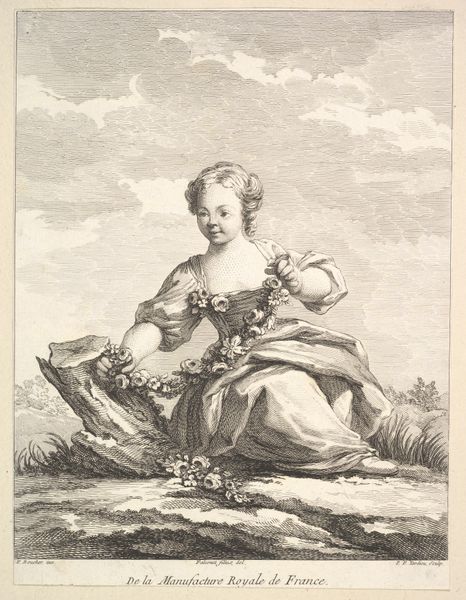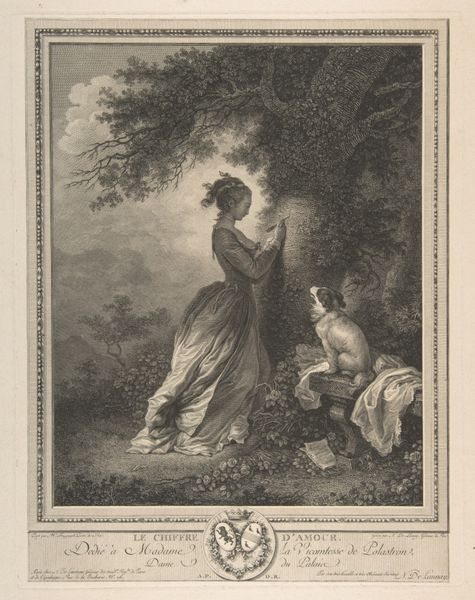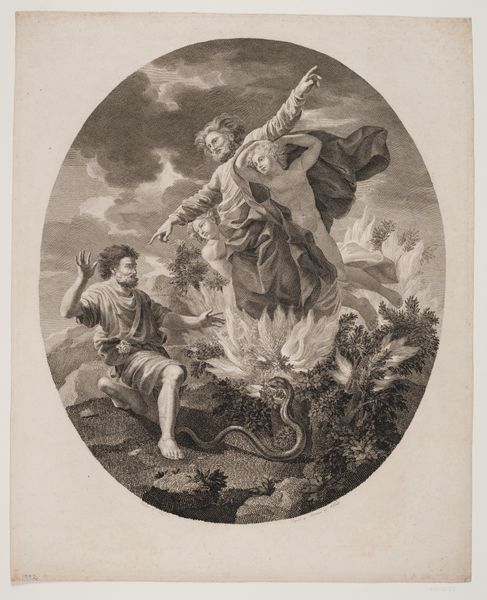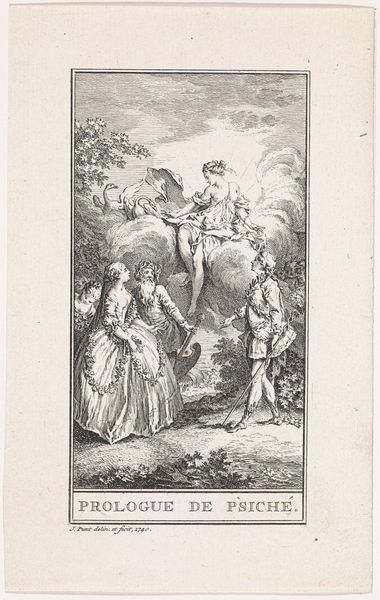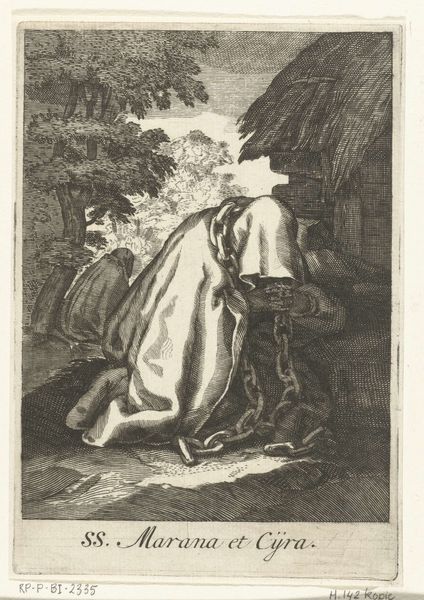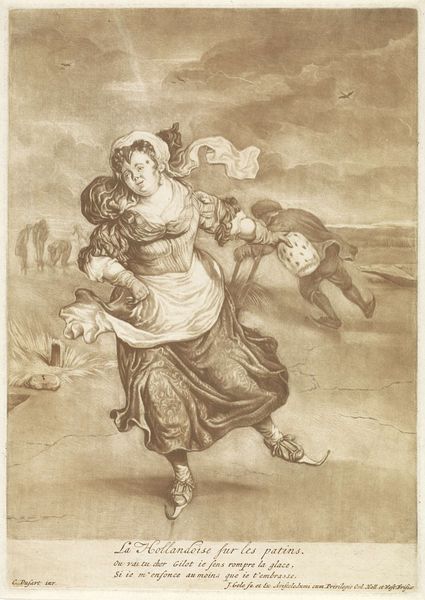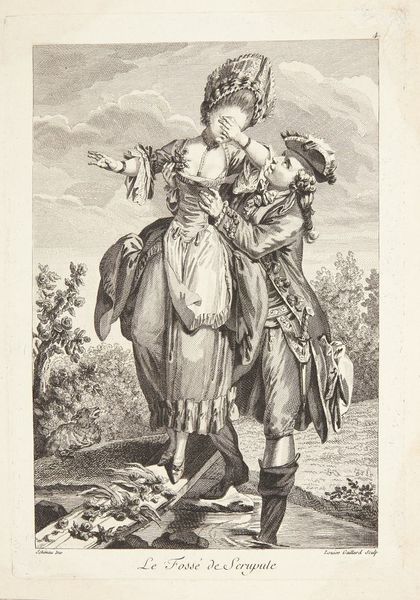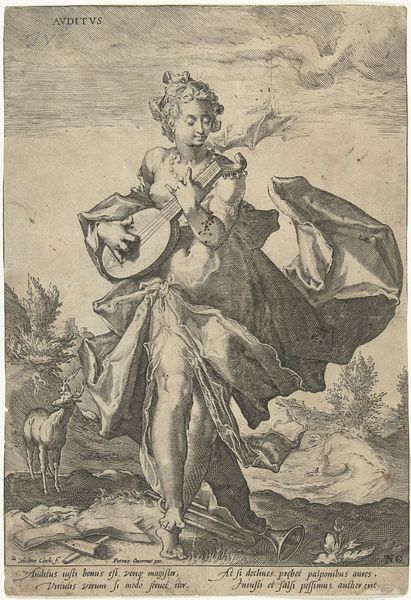
Dimensions: sheet: 14 x 10 3/8 in. (35.5 x 26.4 cm) image: 11 13/16 x 9 3/4 in. (30 x 24.7 cm)
Copyright: Public Domain
Curator: Allow me to introduce "La Fuite a Dessein," a piece by Jean-Honoré Fragonard dating between 1745 and 1806, skillfully rendered in graphite and engraving. It's currently held at the Metropolitan Museum of Art. Editor: My first thought? Pure exhilaration. The composition seems to capture a moment of breathless freedom. I immediately feel this sensation of release. Curator: Observe how Fragonard uses line and shading. The swirling fabric of her dress, the dynamic interplay of light and shadow— it all serves to create a sense of motion and drama. Note the textural difference of the grassy plants on the right compared with those on the left, each meticulously rendered. The sky, rather uniformly cloudy. Editor: The woman is the sole subject, and one cannot but wonder the socio-economic factors underpinning this so-called "escape." Who exactly is she fleeing from and is there something intrinsically political in it? Consider, too, that the piece comes to us from Fragonard’s era when such romantic portrayals of privileged class were typically sanctioned only by wealthy patrons, such as perhaps for members of Louis XV’s Court. Is her action one of mere "escapism", or of deeper consequence? Curator: It is undeniably visually appealing, employing the Rococo's stylistic characteristics in its delicate portrayal of fleeting movement. The formal use of graphite in etching allows a broad appeal in both the rendering of detail as well as the more basic process of reproducible print-making. Editor: Yes, well said! But what I still must contemplate: To whom and why? Surely to frame her act solely within aesthetics deflects from asking relevant contextual questions that affect our own interpretations of power in contemporary society. Even the title prompts us— “Escape with Purpose,” you say. Let's explore why. Curator: In terms of artistry, I think, however, we must not downplay the composition here that really invites that feeling. Her position, those billowing clouds, creates dynamism. This sense of the scene’s animation, its vibrancy, speaks to Fragonard’s real genius. Editor: Precisely. That dynamic effect does not exist in a vacuum. We’re bound to ask what social pressures necessitate it! Perhaps someday, art historians and critics alike will ask not "what" but instead always "why". Curator: Perhaps you are right about our future, my friend. However, as an observer I also believe it remains vitally important to interpret what can be gleaned directly through the work itself, as much as you rightly imply about these broader issues, social matters that must inform also. Editor: Well, for now, hopefully visitors will consider it from multiple angles.
Comments
No comments
Be the first to comment and join the conversation on the ultimate creative platform.


